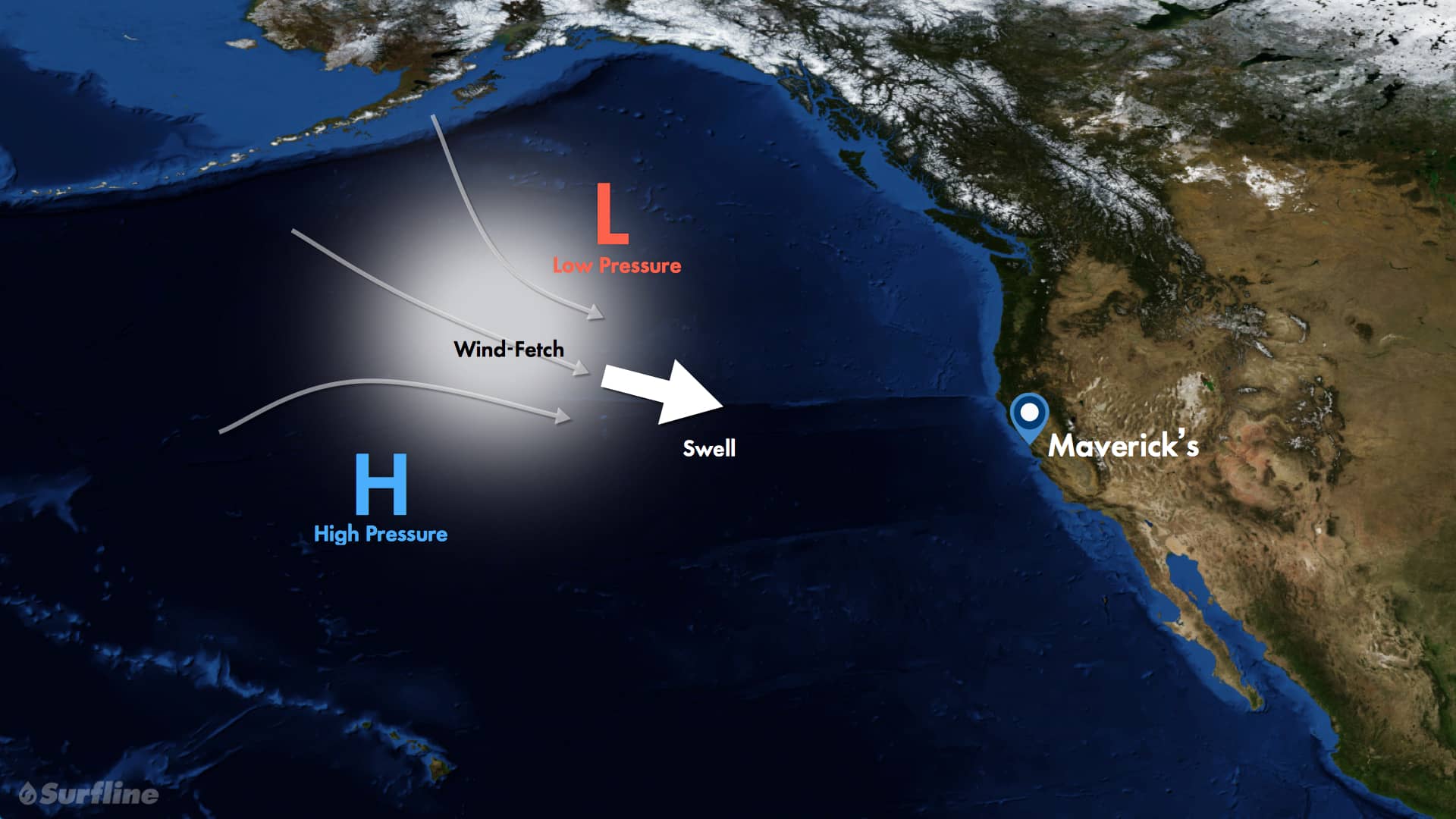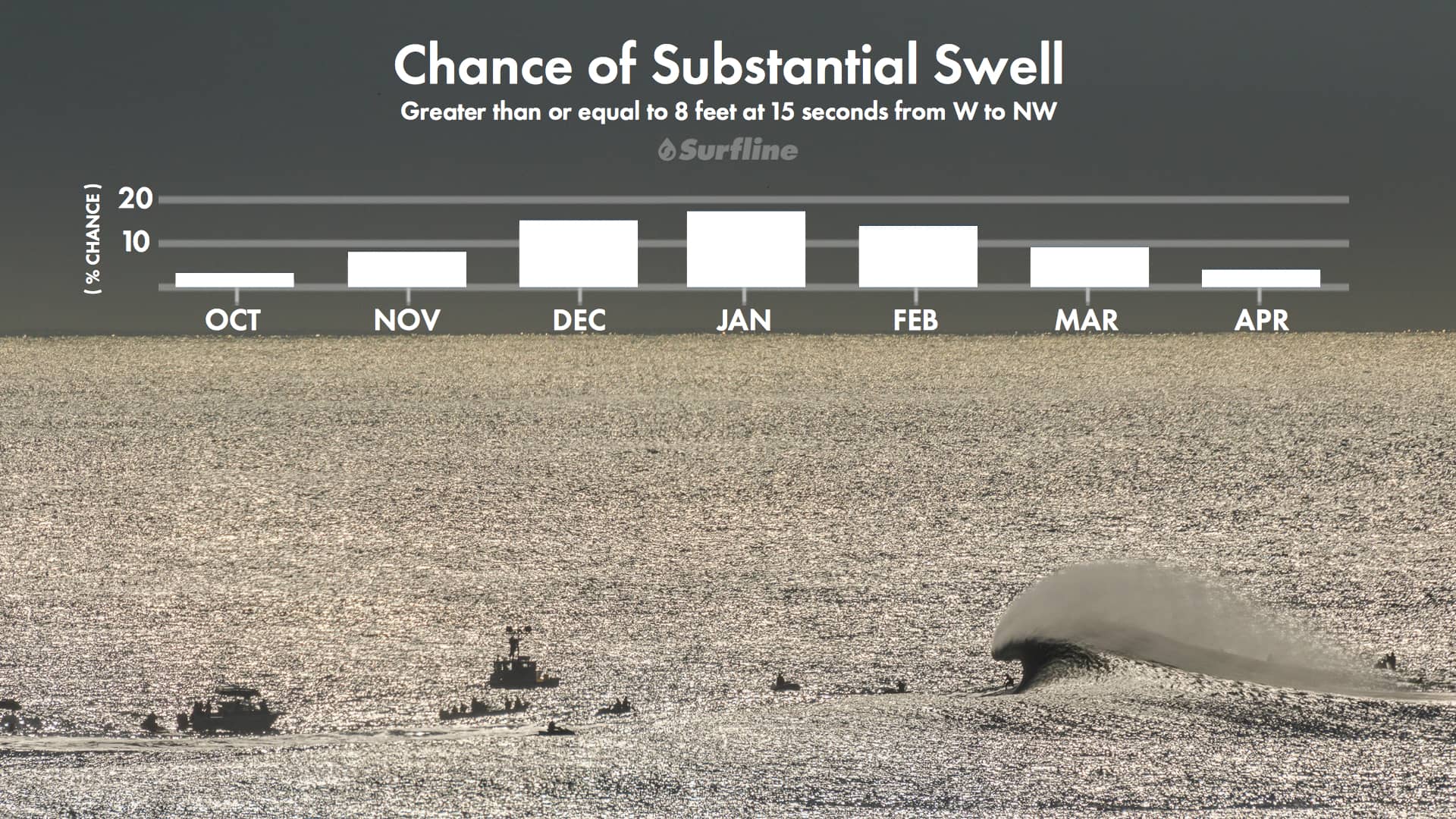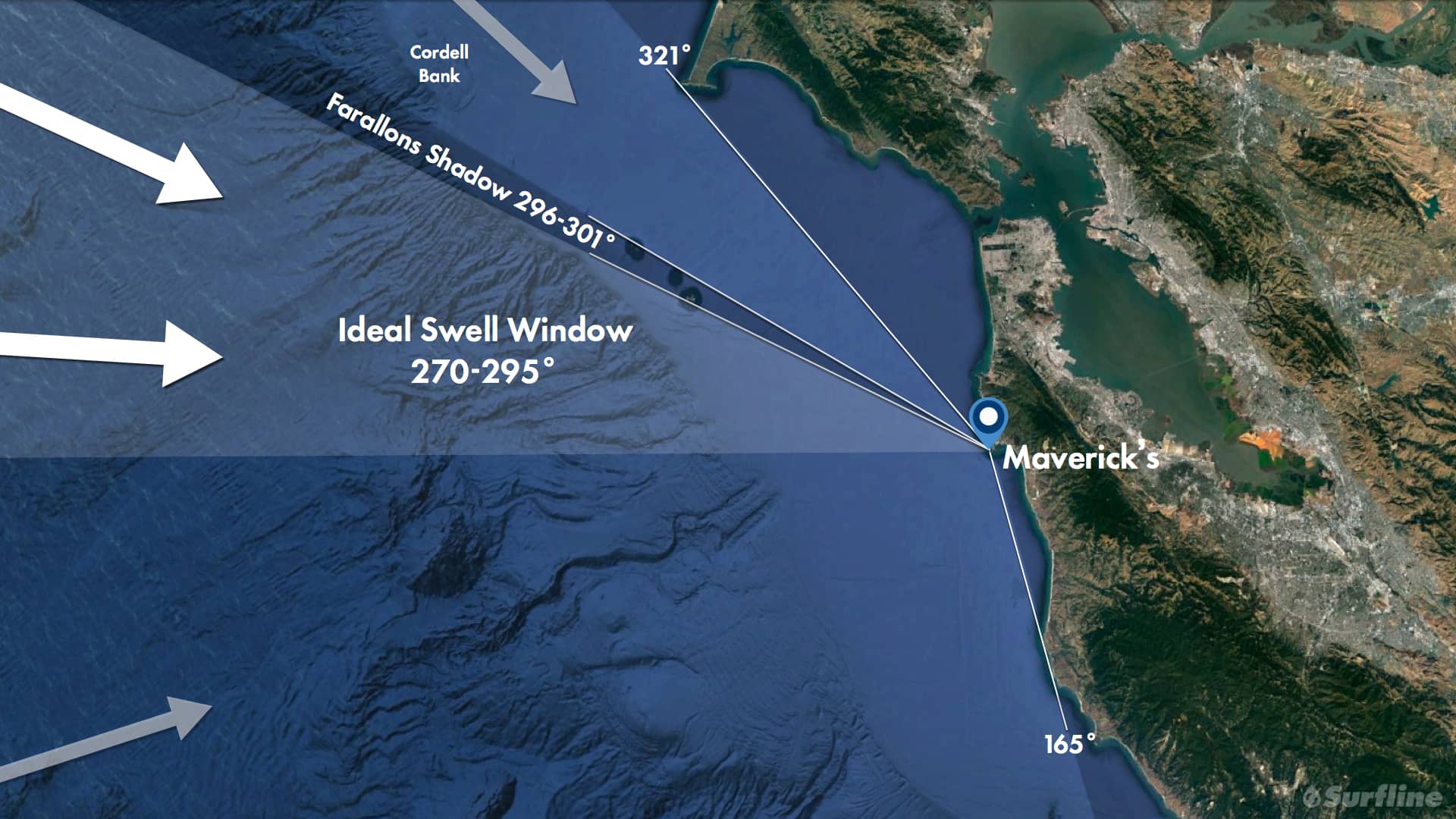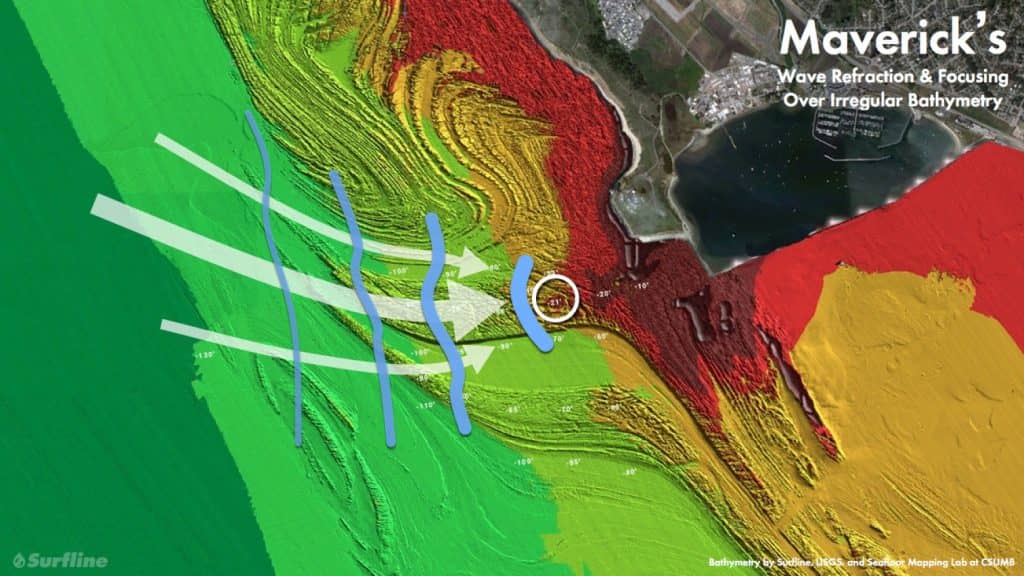The Science of Mavericks
It all starts in what’s known as the “wave factory” in the Gulf of Alaska, where storms gather thousands of miles away. This area experiences heavy storm activity from October to February when low pressure from the south clashes with high pressure in the north. These faraway storms create three key ingredients that make winter the big wave season for Mavericks: wind velocity (how fast it’s blowing), “fetch” (how much surface water area that the wind is blowing over), and duration (how long the wind is blowing over that area). The recipe for big waves is a high dose of all three.
Check out the Surfline.com explanation below on how those big swells form and get to the west coast.
01.
Swell Source
The strongest swells of the year occur from October through April, when intense mid-latitude lows of the North Pacific interact with adjacent high pressure. January is typically the peak month of the season. Furthermore, November through March is usually when we’ll see a more regular occurrence for the storm track to drop south enough in latitude and deliver the more favorable west to west-northwest angled swells for Maverick’s.

02.
Swell Height & Period
For Maverick’s to break properly, there needs to be a very large west to northwest swell and with long swell periods — ideally over 16 seconds. These parameters will require a storm packing wind speeds of 40 knots or greater and over an extended period of time. As you can see in the image above, it’s not a common occurrence, as it takes a lot to produce a strong enough swell to stir this deepwater spot. Even the peak month of the year, January, is just shy of a 20 percent chance to see a swell of at least eight feet at 15 seconds or bigger.

Photo: Jeremiah Klein
03.
Swell Window
The best window for Maverick’s is just under the Farallon Islands, from around 295° to 270°. Not only will these swells propagate more directly into Maverick’s — which helps to maximize the potential for swell size and consistency — but this angle is also ideal for the wave to refract more effectively and break properly across the reef. Although, note that swell period will be a major factor to consider as well.

04.
Bathymetry
Swell direction and period play a very important role in combining with the effects of bathymetry to produce the type of wave a spot is known for. The unique configuration of the underwater landscape that surrounds a spot is responsible for refracting either more or less energy into the surf zone with each variation in swell direction and period. Therefore, during a given swell, the surf can either be amplified to greater heights — or left in a swell void for a particular spot. And throughout the life of a swell as period and direction may gradually change, so will the effects bathymetry will have on the surf. Compared to most normal breaks throughout the world, these wave mechanics are on a much larger scale at a deepwater spot like Maverick’s, therefore the surf impacted is on a much larger scale as well.

Best Conditions for Mavericks
Best Tide
Low to mid, ideally incoming
Best Swell Direction
West to West-Northwest (270-295°)
Best Swell Period
Longer period, over 16 seconds
Best Wind
Calm or very light, offshore
Best Size
Over 20 ft. faces
Best Time of year
Fall & Winter (October to April)
Keep an eye on current conditions and upcoming swells at Mavericks over at Surfline.com

